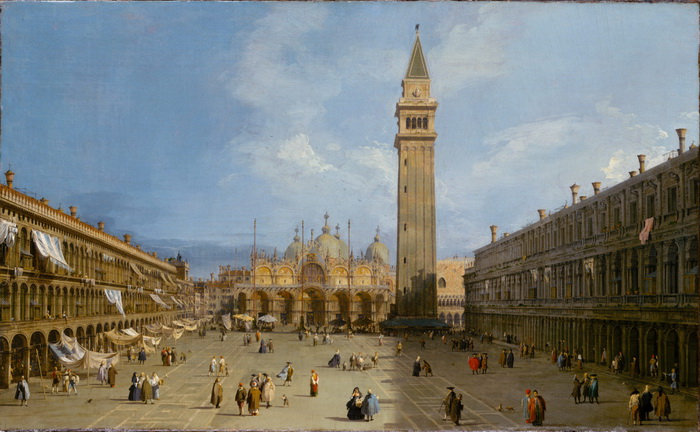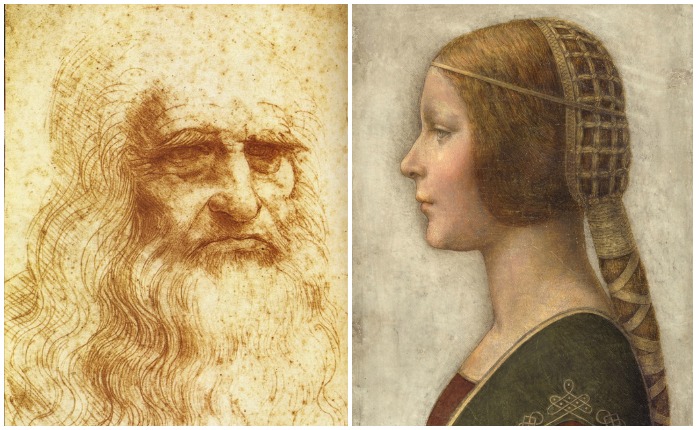STYLES AND TRENDS IN THE VISUAL ARTS
 Abstractionism (from lat. abstractio-removal, distraction) – art direction, refused to approximate the reality of the image of forms in painting and sculpture. One of the goals of abstractionism is to achieve harmony, to create certain color combinations and geometric shapes to evoke a variety of associations in the beholder. The main representatives of abstractionism were: Wassily Kandinsky (1866-1944), Pablo Picasso (1881-1973).
Abstractionism (from lat. abstractio-removal, distraction) – art direction, refused to approximate the reality of the image of forms in painting and sculpture. One of the goals of abstractionism is to achieve harmony, to create certain color combinations and geometric shapes to evoke a variety of associations in the beholder. The main representatives of abstractionism were: Wassily Kandinsky (1866-1944), Pablo Picasso (1881-1973).
Abstract impressionism-the direction of abstract art in which free abstract compositions are created by a large stroke. The meaning of the image was to reflect the psychological state of the artist and his character.
Masters of abstract impressionism: Jackson Polok, mark Rothko, Willem de Kooning, Franz Kline, Lee Krasner
Abstract expressionism (from the English. abstract expressionism) – the direction of abstract art in which free compositions are created by a large, impulsive brushstroke.Masters of abstract expressionism: Jackson Pollock, Arshil Gorki, Hans Hoffman, William de Kunning, mark Rothko, Robert Motherwell, Barnett Newman.
Red beach
Avant-garde (from the French. avant-garde-vanguard) – a set of experimental, modernist, emphasized unusual, search beginnings in the art of the 20th century. Avant-garde trends are: Fauvism, cubism, futurism, expressionism, abstractionism, surrealism, actionism, pop art, conceptual art.
Academic (from FR. academisme) – the direction in European painting of XVI-XIX centuries. It was based on dogmatic adherence to the external forms of classical art. Followers characterized this style as reasoning over the art form of the ancient ancient world and the Renaissance. Academism filled in the tradition of ancient art, which idealized the image of nature, while compensating for the norm of beauty. Annibale, Agostino and Lodovico Carracci wrote in this style.
Actionism (from the English. action art-the art of action) – happening, performance, event, process art, demonstration art and a number of other forms that emerged in the avant-garde art of the 1960s. In accordance with the ideology of actionism, the artist should be engaged in the organization of events, processes. Actionism seeks to erase the line between art and reality.
Empire (from Franz. empire – Empire) – style in architecture and decorative arts emerged in France in the early nineteenth century., during the First Empire of Napoleon Bonaparte. Empire-the final development of classicism. For the embodiment of Majesty, sophistication, luxury, power and military power Empire is characterized by an appeal to ancient art: ancient Egyptian decorative forms (trophies, winged sphinxes…), Etruscan vases, Pompeian paintings, Greek and Roman decor, Renaissance frescoes and ornaments. The main representative of this style was J. L. David (paintings “Horatio Oath” (1784), ” Brutus “(1789))
Analytical cubism-a kind of cubism, characterized by the gradual blurring of differences between form and space and the disappearance of images of objects. In the paintings of this period there are translucent, iridescent, intersecting planes, the position of which is not clearly defined. The arrangement of forms in space and their relation to large compositional masses is constantly changing. The result is a visual interaction of form and space. Analytic cubism was developed by artists from the art Association “Golden section”: albert Gleize, Marcel Duchamp, Raymond Duchamp-Villon, Jean Metzinger and Jacques Villon.
A living head. Pavel Filonov
Analytical art is an artistic method developed and substantiated by Pavel Filonov in a number of theoretical works and in his own pictorial work of 1910-1920.
Starting from cubism as a carrier of the rationalist principle, Filonov contrasted it with the principle of organic growth (from particular to General) of artistic form and “made” paintings. The principle of being done is the main principle of Analytical Art.
Anachronism (from Greek. ana – back, and hronos – time), another name for hypermoralism is one of the areas of postmodernism, offers the author’s interpretation of art of the past. Anachronism emerged in the late 1970s in Italy, and later in France. Master of anachronism: Carlo Maria Mariani, Omar Galliani, Luigi Ontani, Stefano di Stasio, Ubaldo Bartolini, Antonio abbate, Jean Garou.
Winter landscape Underground (from persistent. underground-underground, dungeon) – a number of artistic trends in contemporary art, contrasting themselves with mass culture, the mainstream. Underground rejects and violates socially accepted political, moral and ethical attitudes and behaviors, introducing into the daily life of antisocial behavior. In the Soviet period, due to the strictness of the regime, almost any unofficial, i.e. not recognized by the authorities, art turned out to be underground.
Lefevre Utile. Alphonse Maria Mucha
Art Nouveau (from FR. art nouveau, literally-new art) – common in many countries (Belgium, France, England, USA, etc.) the name of the art Nouveau style. The most famous artist of this direction of painting: Alphonse Mucha.
Art Brut (from the French. art brut-rough art), the art of outsiders-a trend in art in the mid-twentieth century, whose works are created by non-professional artists who are both mentally and socially marginalized. Their work is spontaneous, almost independent of cultural patterns. Close directions – marginal art, Naiv, intuitive art, folk art, primitivism.
Arte Povera (from it. arte povera-poor art) – an art direction that brought together artists from Rome, Turin, Milan and Genoa in the second half of the twentieth Century. Arte Povera artists visualized the dialogue between nature and industry using industrial or non-artistic materials, wanted to liberate creativity from the constraints of traditional art forms and artistic space, and played with the political dimension of industrial materials. The movement became a notable phenomenon on the international art scene, being in opposition and dialogue with minimalism in America, which also used industrial materials. From the point of view of Arte Povera artists, minimalism dealt with aspects of form and did not address the poetic, political and historical issues that were important to Arte Povera. Arte Povera was not an Association of artists with a Manifesto. It was above all a movement which, with the help of a curator and a critic, was recognized and classified in its totality.
Poster art Deco exhibition
Art Deco (from FR. art deco, abbr. from decoratif) – a trend in art in the mid-20th century, denoting the synthesis of avant-garde and Neoclassicism, replaced constructivism.
The international exhibition of decorative arts and the art industry in the period from April to October 1925 in Paris gave its name to the art Deco movement (as a result of the abbreviation of the words Arts Décoratifs in the title of the exhibition) in the art of the first half of the XX century.
The hallmarks of this trend: fatigue, geometric lines, luxury, chic, expensive materials (ivory, crocodile skin). The most famous artist of this trend is Tamara de Lempicka (1898-1980).
Classic representatives of art Deco sculpture considered Dmitry Chiparus, Claire Jean Robert Colin, Paul Philip (France), Ferdinand Preiss, Otto Poertzel (Germany), Bruno Zach, John. Lorenzl (Austria).




